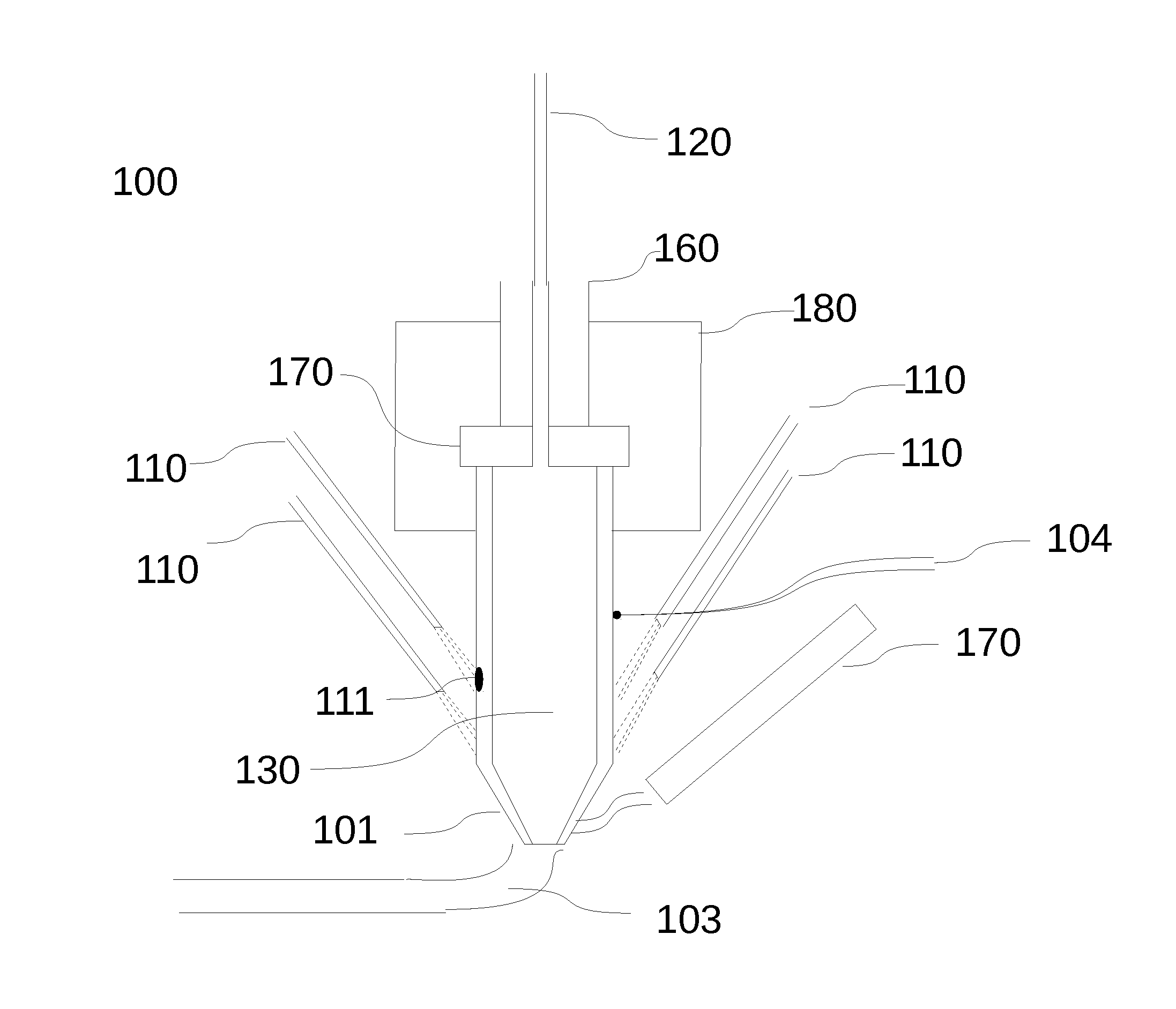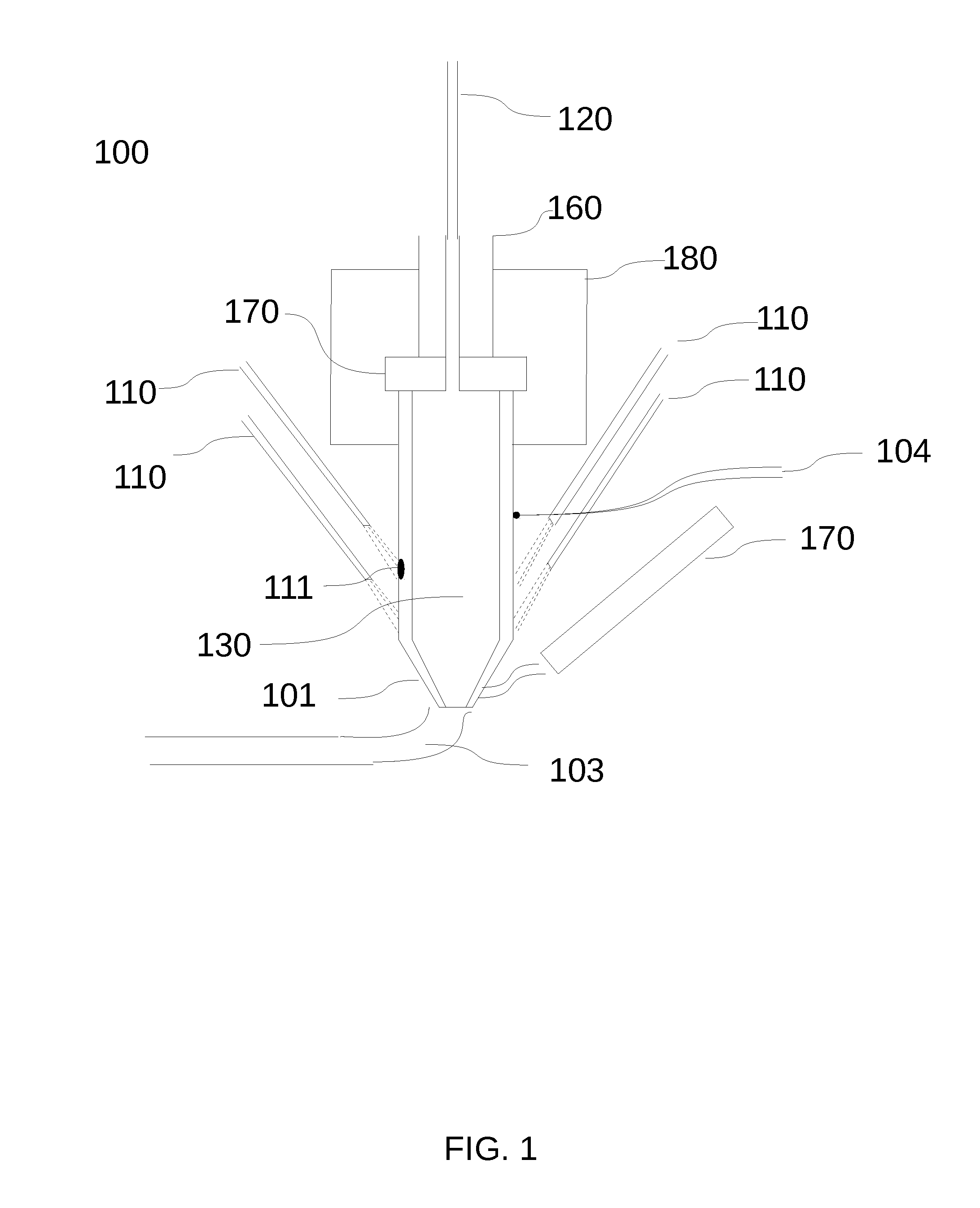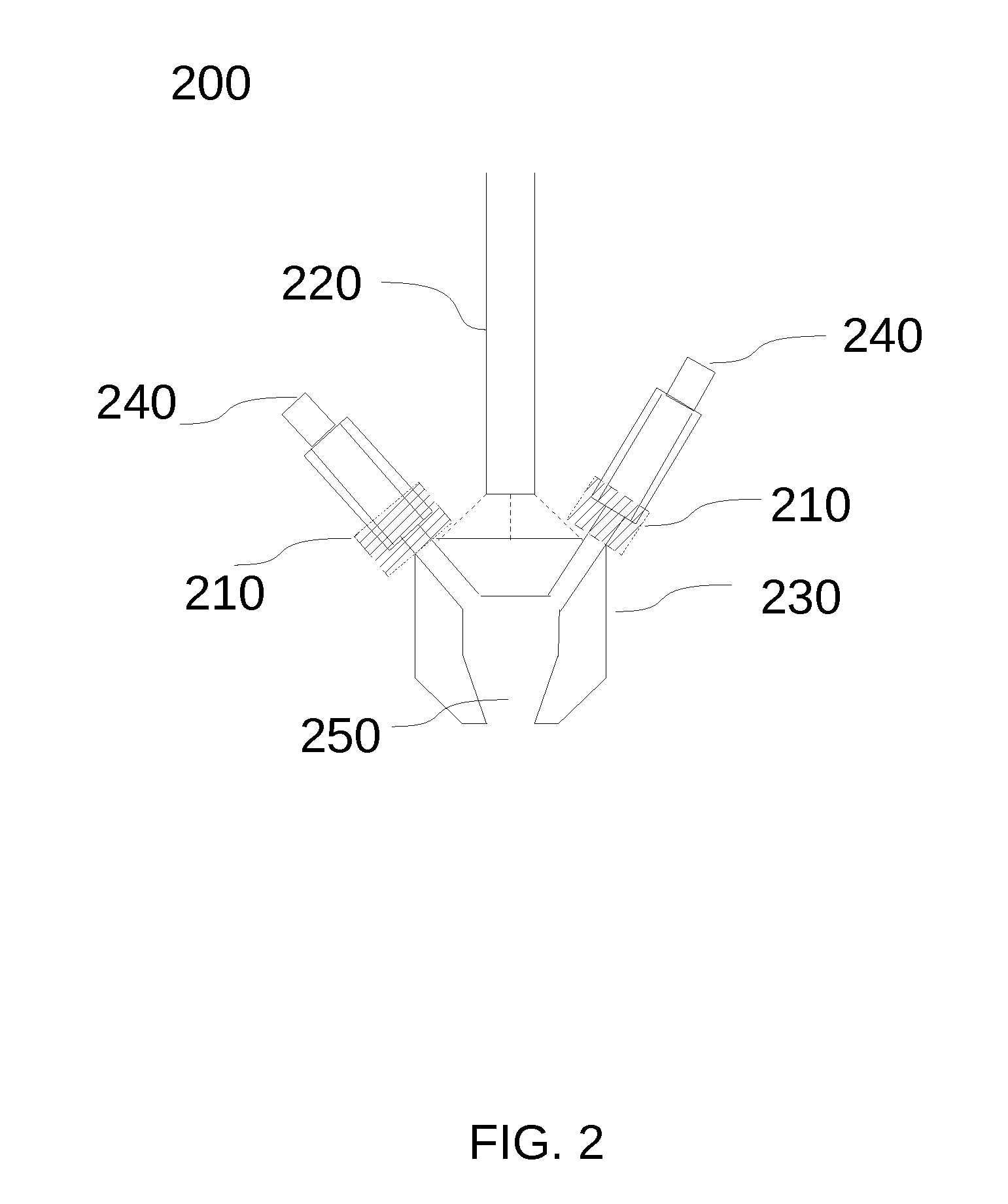Fused filament fabrication extruder
- Summary
- Abstract
- Description
- Claims
- Application Information
AI Technical Summary
Benefits of technology
Problems solved by technology
Method used
Image
Examples
Embodiment Construction
[0009]FIG. 1 illustrates a FFF hot end 100 of a FFF 3D printer according to embodiments of the present invention. In this embodiment, one or more non-contact heat sources 110 heat the FFF deposition nozzle 101. In an example embodiment non-contact heat sources 110 may be a laser. In this example embodiment, heat is generated directly by the laser excitation of the nozzle 101. The use of a laser heat source in this manner eliminates the need for heat transfer elements attached to the nozzle 101, such as a metal block or resistive heater.
[0010]The nozzle 101 extrudes a narrow strand of melted material 103. The material feedstock 120 is shown as a cylinder however it can be of any shape or size. In an embodiment the shape could be a ribbon or other thin profile to allow for faster heating of the material feedstock 120. Pressure is required to force the melted material through the nozzle 101.
[0011]Melt zone 130 is where the material feedstock 120 is liquefied by the heat of the nozzle 1...
PUM
| Property | Measurement | Unit |
|---|---|---|
| Temperature | aaaaa | aaaaa |
| Fraction | aaaaa | aaaaa |
| Temperature | aaaaa | aaaaa |
Abstract
Description
Claims
Application Information
 Login to View More
Login to View More - R&D
- Intellectual Property
- Life Sciences
- Materials
- Tech Scout
- Unparalleled Data Quality
- Higher Quality Content
- 60% Fewer Hallucinations
Browse by: Latest US Patents, China's latest patents, Technical Efficacy Thesaurus, Application Domain, Technology Topic, Popular Technical Reports.
© 2025 PatSnap. All rights reserved.Legal|Privacy policy|Modern Slavery Act Transparency Statement|Sitemap|About US| Contact US: help@patsnap.com



